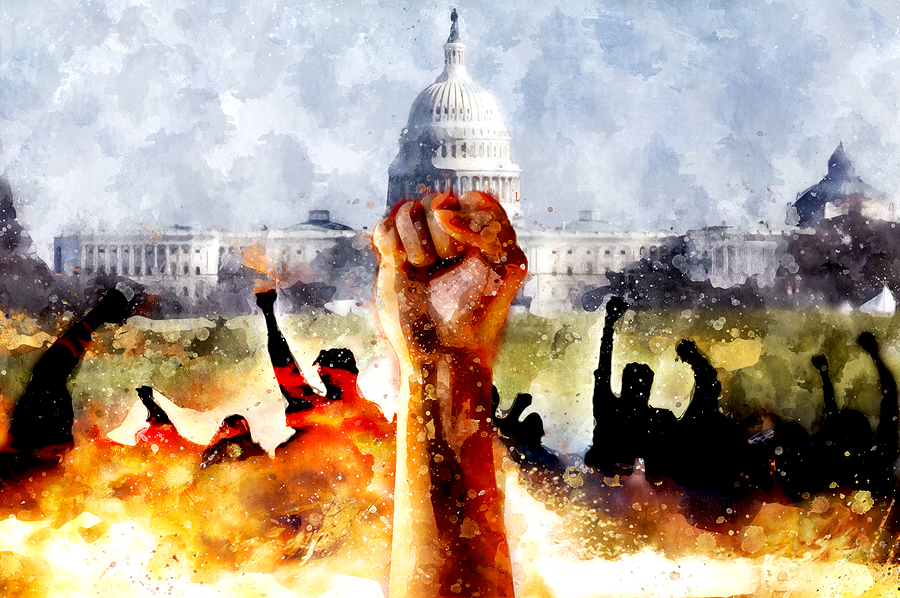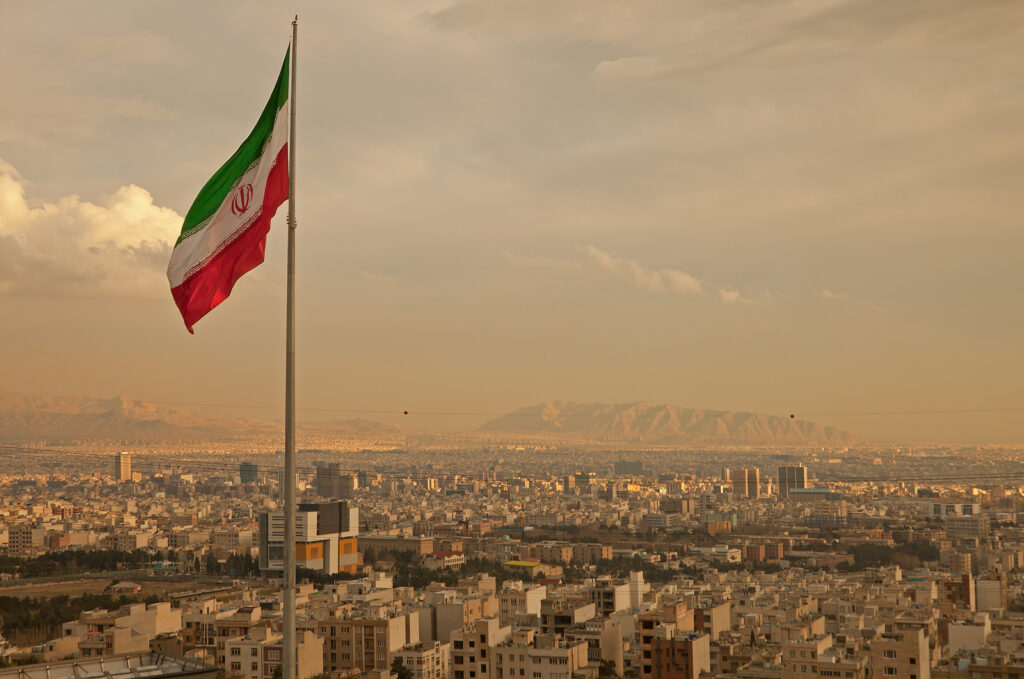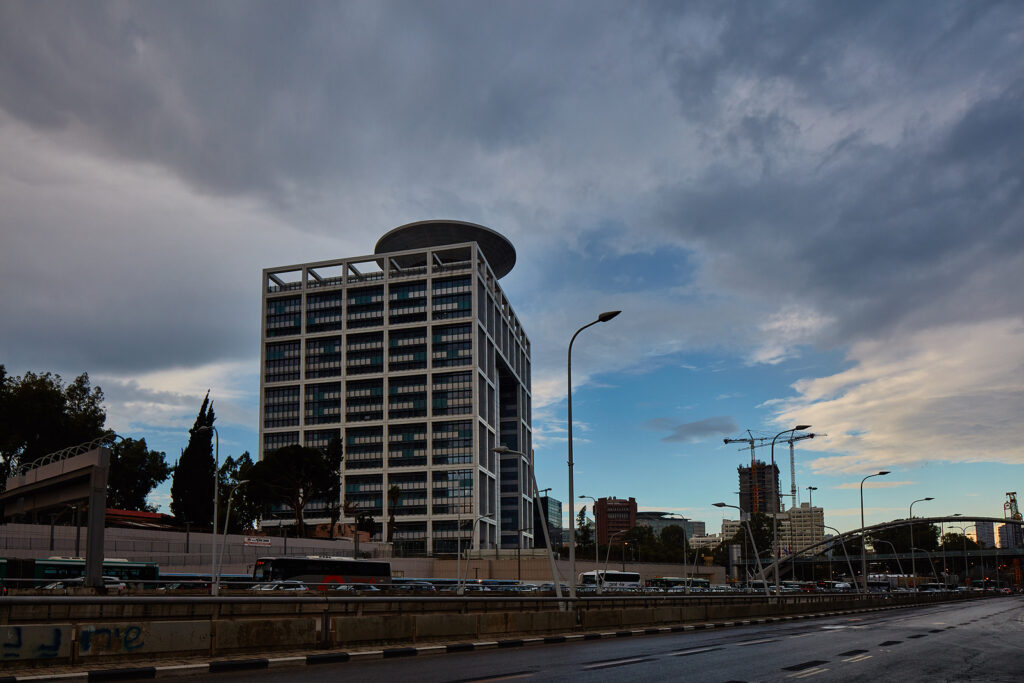There’s no denying that the achievements of the state in its 75th year are remarkable. Our economic and political condition has never been better. Israel is on the verge of reaching a population of ten million, has signed peace agreements with four additional Arab countries, and boasts a per capita income higher than most wealthy European countries. Despite the present circumstances, Israel has historically been on the top of the global happiness index. And indeed, if one were to lift their gaze above the storm clouds, it would appear that the world has gradually begun to reconcile itself with our presence in this region.
Paradoxically, however, there seems to be an almost inverse relationship between Israel’s successes in these areas and the stability of its government, which has deteriorated to an extreme, absurd, and surreal low. The last five election cycles led to a controversial government, months of civic unrest and protests all culminating in the most horrific attack on Jews since the Holocaust.
Many argued that the root cause of the political crisis is “social polarization” – the deep divide between those labeled as “Bibi-ists” and the “anti-Bibi” faction. This is seen as a historical coincidence that will resolve itself with Netanyahu’s eventual departure from the political scene. This claim, however, should be challenged. In truth, the dynamics surrounding Benjamin Netanyahu have unique characteristics and difficulties; yet the polarization is far less severe than portrayed. The deep divisions during the early days of the state between the Mapai socialists and Herut Revisionists, the rifts of the 1990s during the Oslo Accords, and the splits of the mid-2000s were no less severe. Indeed, during the days of Rabin’s assassination, the risk of civil war seemed higher than it does today. Moreover, these periods, which were no less polarized than ours and perhaps even more so, did not lead to a political crisis like the one of recent years.
Furthermore, Israel is not the only country experiencing a period of sharp political polarization. France, for example, has also recently suffered from a polarized and contentious political reality, as have the United States and many other countries. This phenomenon is widespread in Western countries over the past decade and deserves attention in its own right. However, in these countries the political unrest has not been underscored by a threat to these countries’ very existence.
In fact, the current situation is not a crisis that suddenly befell us; it is more accurate to see it as the culmination of a continuous and almost inevitable process. Governments and Knessets in Israel have historically struggled to complete their terms; for two decades, coalitions have become increasingly narrow, major parties have shrunk, and smaller ones have proliferated. Governments have expanded due to an increase in ministries and portfolios, primarily designed to secure partnerships. From one election to the next, from one government to another, more extreme actions and absurd arrangements are being adopted and normalized; elections are either decided by the narrowest of margins or fail to produce a decisive outcome.
Therefore, the conclusion that the Israeli political crisis is the result of historical circumstances – a transient moment of severe political polarization – is incorrect. The real cause of Israel’s political crisis lies in the structure of its governance system.
One may say that other countries with similar governmental structures are experiencing stability, but the belief that the state of Israel, given its unique existential circumstances, can replicate this supposed stability with a parliamentary system is inherently wrong. Israel is inherently socially heterogeneous, and despite the immense efforts of Ben-Gurion and his counterparts, will continue to be so in the foreseeable future. The state of Israel is in a perpetually unresolved identity crisis— one which was highlighted by the civic unrest of the past year and, ultimately, the lack of an agreed upon constitution.
The issue of social heterogeneity is not something that can be “solved” to correct the flaws in our governance system (nor is it even clear that we want to “solve” it); resolving foundational issues, as well as establishing a constitution, are steps too monumental to occur within the framework of the current governance structure. The only solution – even if it may seem far-fetched – is to change the system of governance, transitioning to a presidential system.
Governance systems in democratic countries are broadly divided into two types: the parliamentary system and the presidential system. The main and significant difference between them lies in the nature of the relationship between the executive and legislative branches, between the government and the elected parliament.
The more common form of governance is the parliamentary system, where the executive authority is in office based on the confidence granted by the legislative authority. In this system, the parliament’s support for the executive is ongoing and not a one-time event. Parliament has the right to dismiss the government and force its leader to return the mandate In this system, the public typically expresses support not for individual candidates but for a party or list whose positions they endorse. In a party-list system, if the head of the list is unable to fulfill their role, he is replaced by the next in line, and so on and so forth. The prime minister must therefore continuously ensure that he does not breach the trust placed in him. The primary advantage of the parliamentary system lies in the ability to replace a failing executive authority and the enhanced oversight capabilities over its activities – but these come at the expense of the government’s stability and efficiency, as its responsiveness to the elected house and other parties complicates its work and threatens its stability.
The second system is the presidential system, which is prevalent in almost all countries in the Americas, including the US. In this system, the head of the executive branch of government receives his mandate directly from the people and, except in extreme cases, does not need any expression of confidence from the legislature. This trust is not subject to re-evaluation until the next scheduled elections. For example, in the US, presidential elections have been held every four years since the first presidential election in 1788-89. The primary advantage of this system is the government’s stability and executive capacity, but these come at the expense of the parliament’s power and the public’s ability to oversee the government.
Both systems have their pros and cons. Therefore, when considering which system is preferable, we should ask ourselves: In our specific context, which disadvantages are we better prepared to handle? Given the characteristics of our society and environment, which vulnerabilities pose a greater threat to us?
My argument is that for the State of Israel, the disadvantages of the parliamentary system present a more serious risk, and hence it is imperative that we transition towards the presidential system. This is not a theoretical claim; both our recent past and current experiences empirically demonstrate this. The primary cause lies in the demographic characteristics of Israel.
Israel’s Parliamentary Demise
I moved to Israel in 1969. Ever since I was a child, I have been fascinated by politics, and it was my older brother who introduced me to the intricacies of the political landscape in Israel. He explained to me that Israel operates under a parliamentary system (similar to Belgium, where I emigrated from), with the Mapai/Ma’arach parties serving as the cornerstone for many years. Although other parties participated in the political arena, it was hard to imagine a government where Mapai was not the dominant player. My brother told me that Mapai had been, was, and would continue to shape Israeli governments indefinitely. Israel was founded on socialist principles: the second most important day in the country, after the Knesset elections, was the Histadrut (General Federation of Labor) election day. Back then, it seemed unimaginable that within just eight years, the Likud party would rise to power. The public overwhelmingly supported Mapai and the parties that formed coalition alliances with it, trusting the party to nominate the most suitable candidate to lead the nation.
Indeed, from its inception in 1948 until 1969, Mapai ruled Israel with virtually no significant challenge. In the October 1969 elections, the Ma’arach, with Mapai at its core, transformed into the Labor Party and achieved a record-breaking victory winning 56 seats in Knesset. Even in the elections of January 1974, which were postponed due to the Yom Kippur War and held shortly afterwards, it was clear to everyone that the Ma’arach would win. Although they secured fewer seats this time, with only 51, they still easily formed a government with 68 members and maintained power despite the nation’s somber mood. Additionally, as in previous years, it was a foregone conclusion that the key ministries of Defense, Foreign Affairs, and Finance would be held by members of the winning party. The National Religious Party (Mafdal) was almost certain to be part of the coalition. There was talk of its historical alliance with Mapai, but Mafdal was typically assigned the Interior and Religious Affairs portfolios. The idea that Mafdal might receive the Defense portfolio, or any other major ministry, was unthinkable at the time (when Mafdal secured the Education portfolio in 1977, it was considered a minor revolution).
At that time, three main issues dominated the national agenda: Israel’s wars, its struggles on the international stage, and the fight against Palestinian terrorism. The common denominator among these issues was their focus on conflicts with external entities. Even the “Black Panthers” movement, a protest group advocating for the rights of Mizrahi Jews in Israel, did not make major headlines, only managing a secondary headline in the Maariv newspaper. The country experienced a period of industrial tranquility, and the government acted decisively and effectively.
The inherent disadvantages of the parliamentary system were not apparent in this reality – at least not significantly. The government and its coalition enjoyed a large and stable majority, so the possibility of them being destabilized and overthrown was really only a concern in extreme cases. The Prime Minister wielded considerable power, enabling him to dictate policy in his government, and with no major opposition, the government enjoyed comparative stability.
However, all this was about to change.
The Need for a Second Political Awakening
Despite the misleading impression created by the stable politics of the first several decades of its history , Israeli society has always been relatively heterogeneous. However, in the early years of the state, the proportions among the different groups in the population were different from what they are now; and during those days of Mapai’s hegemony, which also included control over many aspects of the economy and labor market, this heterogeneity was not significantly reflected in voting patterns. But since the early 70s, noticeable demographic changes have occurred. The population has more than tripled, including an influx of over a million immigrants from the former Soviet Union, bringing with them unique needs, interests, and cultural characteristics. The ultra-Orthodox population has grown substantially, now constituting almost 15% of the total population. The Mizrahi and traditional Jewish population developed political awareness and started demanding its place in the political arena. Religious Zionism detached itself from Mapai’s umbilical cord and developed its political aspirations. The Arab population also increased and began to play a more significant role in Israeli politics. The result of all of this is a population composed of diverse sectors – secular, traditional, national-religious, ultra-Orthodox, Arab, and non-Jewish – each pulling the blanket in its own direction. This dynamic naturally leads to a proliferation of political parties, as well as difficulty in forming and maintaining coalitions and governments.
Furthermore, this dynamic is exacerbated by the fact that several fundamental issues in the State of Israel, primarily the question of its final borders – especially its eastern border since the Six-Day War – remain unresolved. This leaves the Israeli political system in what at the very least appears to be a constant state of “all-in” play, where every risk is critical and any loss or compromise is potentially fateful.
This situation and its intensification are facilitated by the fact that Israel does not have a constitution. This allows any majority in the Knesset to change the status quo, amend Basic Laws, and generally manipulate the system according to its immediate needs. The Supreme Court appears to stand as a check, but it has an unclear place with respect to what law it operates under, the source of its authority to intervene, what guides its decisions concerning which cases to take up. Israel’s conduct resembles a football game without clear rules and boundaries but with a referee. The High Court of Justice (Bagatz) decides for itself when the majority has “gone too far” and when it ought not intervene. There is no one in Israel who can answer the simple question: what clear criteria determine in which cases Bagatz intervenes and in which it does not? This situation is responsible for another significant problem characterizing the Israeli regime: the improper relationship between the judicial authority and the legislative and executive branches, manifested in the Supreme Court’s intervention not only in governmental issues but also in clear moral and value-related issues, linked to fundamental matters that are not resolved within the existing governance system.
In the past, there were several attempts to improve, streamline, or change the existing system, but to no avail. For instance, in 1996, an attempt was made to transition to direct elections for the Prime Minister, but this solution only exacerbated the problem. Citizens saw the new system as an opportunity to vote for their preferred party while simultaneously choosing a Prime Minister from a different party. As a result, this experiment led to the growth of smaller parties at the expense of larger ones, thereby weakening the Prime Minister’s position and leading to even less stable coalitions than before. This system was abolished after only three election cycles.
Another attempt to address the problems in the existing system was made by changing the electoral threshold. Until 1982, the threshold was a mere 1%, which was then raised to 1.5-2%, and today it stands at 3.25%. The electoral threshold was ostensibly designed to strengthen the larger parties, but it too proved to be ineffective. In practice, raising the threshold actually strengthened the smaller parties by eliminating competition that could have existed between them and other small parties, which only led to unions among them. This increased their ability to further exert pressure on those trying to form a government.
The consequences of this reality have intensified over time, reaching the peak that we witnessed in the Lapid-Bennett government of 2021. For nearly a decade, the Israeli government has lacked a clear leadership direction. The Prime Minister was forced to perform intricate political maneuvers to please the supporting factions. The key portfolios in the government – the Prime Minister’s Office, the Ministry of Defense, the Ministry of Finance, the Ministry of Justice, and the Ministry of Foreign Affairs – are divided among different parties, leaving the Prime Minister without effective means to exert pressure on his government members. The Defense Minister can act almost independently, as can the Foreign and Finance Ministers.
At the outset of the 36th government, led by Naftali Bennett, the Prime Minister headed a list that had only six mandates, and the central government ministries were divided among five different parties. It was both amusing and sad to see the varying responses to the Russia-Ukraine war emerging from the Prime Minister’s Office and the Foreign Ministry; the conflicting policy perspectives of the Prime Minister and the Defense Minister regarding the Israeli-Palestinian conflict; and the attempts by senior left-wing ministers to block the policies pursued by the Finance Minister.
Israel is in a state of perpetual elections. The parliamentary system does not allow for stability. Ministers, always eyeing the potential dissolution of the government and the next elections, increasingly engage in populism. Members of the Knesset (MKs) constantly feel the instability of their seats and the uncertainty of their future. Because the Prime Minister is aware that his government could fall any week, he feels that he cannot act to realize his vision.
Israeli politicians are primarily focused on maintaining their status, which means prioritizing their public relations. In the last 15 years, there has been a noticeable decline in the quality of debates in the Knesset, which has become even more raucous and populist than before. MKs are acutely aware of the surrounding media and the fact that their activities in the Knesset are recorded and broadcasted live. They know that the more they sensationalize, the more likely they are to be featured in the news. They also understand that the life of the Knesset could be cut short at any moment, motivating them to use their time in the Knesset for public relations rather than performing their parliamentary duties. The required mental peace for conducting substantive and useful discussions is absent. Indeed, in any democratic system, “Politics is Everything,” but in Israel, it feels like politics can be reduced to one long continuous election cycle.
The fact that, as mentioned, the political game in Israel is a zero-sum game, led to a pattern that became extremely evident during 2021–2022, where votes in the Knesset were conducted almost exclusively along partisan lines rather than on the merits of the issues (issues such as the amendment to the Citizenship Law, the Cannabis Law, etc.). Members of the Knesset (MKs) vote according to the needs of the coalition or the opposition, even on issues that cross partisan lines, to either facilitate the government’s fall or at least to prevent their rival from achieving gains that might strengthen their position for the upcoming elections – which are likely to result in either indecision or a slim margin of victory.
In the past, there were complaints about the extortionate demands of small parties, but today in Israel, the leverage of individual MKs is a greater problem. The power and significance of a single parliament member in Israel are unmatched in any other parliament worldwide. This is especially true when the coalition relies on 61 MKs: each member becomes a pivotal balance point.
More of the absurdities that arose from the political unrest of the past half-decade include the proliferation of ministries to the excessive number of over 30 in the 37th government, as well as the Norwegian Law, which permits ministers to surrender their Knesset seats while retaining their ministerial post, essentially doubling the party’s parliamentary capabilities. Perhaps the most absurd, however, was the notion of an alternate Prime Minister—a system where, midway through the government’s term, the head of said government relinquishes power to a member of a different party.
Changing the system of government is undoubtedly a radical step. However, a discerning look at the reality of Israeli politics today suggests that there may be no alternative. In pursuit of well-deserved governmental stability, and to escape the quagmire that led to the horrific massacre of October 2023, we will need to relinquish some control and oversight over the current system and transition to a new, yet proven, system: the presidential system. This, along with additional procedural steps that a presidential system could enable, such as the establishment of a constitution and the regulation of the relationship between the judiciary and the other two branches of government, could lead to the resuscitation of the Jewish state—a second political awakening.
A Presidential System
All these points lead to the conclusion that it would be preferable to transition to a presidential system. This would entail a complete separation between the executive and legislative authorities, along with the regulation of the status of the judiciary. A presidential system would end the frenzy of frequent and repetitive elections, as well as the constant threat of coalition dissolution and the call for new elections, thereby allowing the president and the Knesset to function in relative calm. Ministers in the government, as is customary in a presidential system, would be chosen by the president and independent of the Knesset parties. All Knesset members would be legislators. The situation in which the Knesset is primarily a stage for the opposition would cease, and generally, the concepts of “opposition” and “coalition” would lose their meaning. Of course, political factions and rivalries would remain in the legislature, but not every legislative act would be tied to the struggle for power. Knesset members would be both able and motivated to focus on their branch’s purpose. They would not need to operate under the constant shadow of a potential government collapse and the dissolution of the legislature.
Transitioning from a parliamentary to a presidential system would allow for a series of additional and complementary reforms in the governmental system. These changes, which many have previously pointed out as necessary, were pushed beyond the political horizon by the existing system. These changes include, as we will detail shortly, increasing the voter’s influence on the list of Knesset candidates and properly arranging the relationship between the judiciary and the executive and legislative authorities.
The proposal I will outline here is very general and touches on a variety of issues that require lengthy and complex discussions. However, I seek to turn my personal disadvantage, as someone who is not a man of political science, into an advantage: by only generally addressing the trees, it will be possible to keep the forest in view, that is, to conceive of a broad alternative to the current system of government and its advantages over the current system.
Here then is my general and initial proposal:
The new governmental system will include an elected president who heads the executive branch of government and appoints its members, alongside a Knesset imbued with the legislative authority.
Only a candidate who receives more than 50% of the votes can serve as president. If in the first round no candidate achieves more than half of the votes, a second round will be held between the two leading candidates from the first round; this is to ensure that the elected president will be acceptable to a majority of the voting population, even if only a narrow majority. The tenure of the president will be limited to two terms, as is customary in most presidential systems worldwide, so as to prevent corruption and allow for a refreshing change of leadership.
A minister will not be able to serve as a member of the Knesset. The president will have the authority to dismiss a minister at any time and appoint another in their place, so long as that person is not a Knesset member or someone who holds another position in the state. The list of government portfolios will not be made at the discretion of the president but spelled out in the constitution.
Elections for the Knesset will be held about a month and a half after the presidential elections. Anyone elected to serve as a minister under the president will not be able to serve as a Knesset member. Candidates who lost in the presidential elections will be able to run for the Knesset.
The electoral threshold will be set at one percent or be completely abolished.
Alongside these key parameters, Knesset elections would be held using an open-list system (as is done in several countries around the world), allowing voters to mark specific preferred candidates on the ballot for different lists. This change will enable voters to influence the relative power of party members and enhance the representativeness and accountability of the elected representatives to their constituents.
The Knesset will be responsible for all legislative matters. The president and his government will have no legislative authority, and policy steps requiring legislation will depend on the consent of Knesset members.
The Knesset will have the power to impeach and convict a sitting president with a qualified majority of more than two-thirds (in a 120-member Knesset – a majority of 81). In such a case, the Knesset will choose one of its members to serve as president during the transition period until the next election.
It would be advisable to distinguish between three types of laws, based on the majority with which they are passed: regular majority (majority of the votes), absolute majority (a majority of all members of the Knesset), and qualified majority (over two-thirds). A law will only be repealed or amended with a majority corresponding to the one that enacted it: a law passed by a qualified majority can only be repealed or amended by a qualified majority, a law passed by an absolute majority can only be repealed or amended by an absolute majority, and so forth. This is inspired by the halakhic principle that “the mouth that prohibited is the mouth that permitted” (alternatively, the principle that “as it is absorbed, so it is emitted”). Laws passed by a qualified majority could become part of the constitution if the legislator decides so. Additionally, the president would have veto power over laws passed by an absolute or regular majority only.
The Knesset will legislate a constitution composed of laws that pass with a qualified majority. This is not the place to present a detailed concrete proposal for a constitution, even a slim procedural one, but such a constitution could include the following items: the definition of the State of Israel as a Jewish and democratic state; the right of every Jew to immigrate to the State of Israel (the Law of Return); clear fundamental rights, such as freedom of movement; the right to vote and be elected; the structure of the Knesset – including permanent committees; the structure of the government – including permanent ministries; and other items that establish governmental procedures.
As part of the regulation of the relationship between the authorities in the new system, a Constitutional Court will be established. The role of the Constitutional Court will be to interpret the constitution in cases of possible contradiction between it and the activities of the other branches of government. The Constitutional Court will not be able to declare a law invalid if it was enacted by a qualified majority and defined as part of the constitution. The rulings of the Constitutional Court will be final and cannot be “overruled” by legislation passed by a regular or absolute majority (in the spirit of what is known as “override clauses”). Members of the Constitutional Court will be selected and appointed directly by the Knesset, and therefore be reflective of the Knesset. This aligns with the logic that the Supreme Court’s power to override public representatives should correspond directly to its connection with the public. Establishing such a court will pose a legislative challenge that requires in-depth deliberation by legal and legislative experts.
As is well known, the devil is in the details. With respect to each of these issues, there will be a need to refine the exact procedures that will yield an optimal result. However, these are the essential elements required to establish a presidential system, to formulate a constitution, and to regulate the relationships between the authorities in Israel, as a prerequisite for stabilizing Israeli politics.
Conclusion
The State of Israel, as is widely recognized, is at a pivotal juncture. The political unrest of the late 2010s and early 2020s will not subside without a decisive shift in our collective mindset. The events of October 2023 should serve as a stark reminder of our vulnerability. Israel cannot sustain an incessant cycle of elections and must adopt a more stable form of government. Contrary to expectations, the 37th government led by Netanyahu, formed under the guise of a right-wing majority and promising long-awaited political stability, achieved the opposite. It incited political turmoil not witnessed in decades and inadvertently led to a civic deadlock, which opened the door for our adversaries to strike in a manner reminiscent of the surprise attack experienced 50 years earlier on Yom Kippur.
Time is of the essence. In order to address this crisis, we need to begin thinking outside the box and move beyond outworn practices and theories. We must take the necessary steps to promote governmental stability, public trust in state institutions, and the ability to lead Israel towards achieving further successes. There are additional steps, not mentioned here, that could improve the political culture and alleviate the difficulties caused by the heterogeneity and multiplicity of interests in Israeli society. For example, decentralizing governmental power to the local level, implementing a civic service obligation for all citizens of the state, and regulating the right to vote and be elected to the Knesset. But the crux of the matter is laid out here: a presidential system is much more suited to the needs of the State of Israel than a parliamentary one. Only such a system holds the potential to remedy the problems paralyzing Israel, allowing it and its leaders to focus far more on policy and far less on politics.
Originally published in Hashiloach 32 (Hebrew, February 2023) following Operation Guardian of the Walls, this article was translated and re-edited for the Hashiloach Frontlines initiative due to its continued relevance. The article was translated by Eitan Wachspress and edited by Dr. Mitchell Rocklin.
Picture: Howard Chandler Christy, Scene at the Signing of the Constitution of the United States, 1940. Wikimedia








